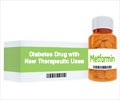The cardiovascular benefits of the diabetes drug dapagliflozin extend across a wide spectrum of patients, especially pronounced in those with reduced ejection fraction.

‘The drug decreased hospitalizations arose due to heart failure and the rate of deaths from cardiovascular diseases.’





Heart failure is a condition in which the heart cannot pump enough blood to meet the body's needs. Low ejection fraction can be evidence of heart failure, though many patients have heart failure with normal, or preserved, ejection fraction. Researchers found dapagliflozin decreased heart failure hospitalizations across all patients, regardless of ejection fraction or whether or not they had heart failure at the start of the study. However, the drug significantly decreased rates of death from cardiovascular causes and death from all causes only among those who had a lower ejection fraction. "The use of the SGLT2 inhibitor dapagliflozin is beneficial in reducing hospitalizations for heart failure in patients with a broad range of left ventricular ejection fraction, but patients with reduced ejection fraction may derive an even greater benefit," said Eri T. Kato, MD, PhD, a cardiologist at Kyoto University Hospital and the study's lead author. "The clinical implication of this finding is that ejection fraction is a strong tool to identify those who are at highest risk and may derive particular benefit from SGLT2 inhibitors."
SGLT2 inhibitors improve the body's ability to remove glucose from the bloodstream, helping to regulate blood sugar in people with diabetes. DECLARE-TIMI 58, conducted at 882 sites in 33 countries, enrolled more than 17,000 patients who had Type 2 diabetes, as well as either established cardiovascular disease or a high risk for cardiovascular disease. Patients were randomized to receive dapagliflozin or a placebo and followed for a median of just over four years.
Thirty percent of study participants (5,202 patients) had their LVEF documented at the start of the trial. Of these participants, 13 percent (671 patients) had heart failure with reduced ejection fraction (HFrEF), defined as an ejection fraction less than 45 percent, meaning that just 45 percent of the blood in the left ventricle is squeezed out with each heartbeat.
Researchers compared rates of heart failure hospitalizations, cardiovascular death and all-cause mortality among patients with HFrEF and those without HFrEF. They found patients with HFrEF who took dapagliflozin were 38 percent less likely to be hospitalized for heart failure or die of cardiovascular causes compared with those taking placebo, a significantly greater reduction than the 12 percent drop in the likelihood of these events among patients who did not have HFrEF.
Advertisement
"The reduction in hospitalization for heart failure is remarkable because there have been very few therapies that have shown any benefit both in patients with heart failure with preserved ejection fraction and in patients with heart failure with reduced ejection fraction," Kato said. "Furthermore, there appears to be a benefit for heart failure reduction across a broad spectrum of patients with and without heart failure, suggesting that use of these agents could be beneficial in a very large population of patients with diabetes."
Advertisement
Researchers plan to further analyze the DECLARE-TIMI 58 data to understand dapagliflozin's effects on metabolic, renal and cardiovascular outcomes. Other ongoing trials are investigating SGLT2 inhibitors in patients with heart failure, which should shed further light on the benefits observed in this study, Kato said.
Source-Eurekalert















